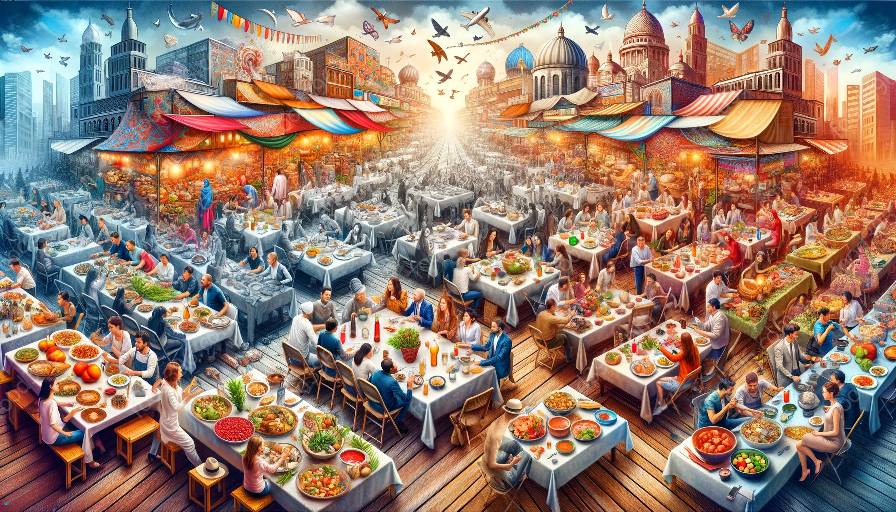Food and religion have long been intertwined, serving as essential components of cultural and spiritual practices across the globe. The relationship between food and religion is a rich and complex topic, deeply rooted in tradition, symbolism, and social cohesion. Understanding this intersection sheds light on the role of food in shaping social structures, cultural identities, and religious beliefs.
The Significance of Food in Religious Practices
In various religious traditions, food holds immense symbolic and ritualistic significance. For example, in Christianity, the Eucharist, or Holy Communion, involves the consumption of bread and wine, representing the body and blood of Jesus Christ. This act of consuming sacred food is a central part of Christian worship and communion with the divine.
Similarly, in Hinduism, the offering of food to deities in temples and households, known as prasadam, is a form of devotion and a means of receiving blessings from the divine. The act of sharing and consuming prasadam also reinforces social ties and community solidarity.
These examples illustrate how food serves as a conduit for spiritual connection and cultural expression within religious contexts, playing a pivotal role in reinforcing beliefs, values, and traditions.
Food, Ritual, and Social Cohesion
Food rituals often play a central role in religious ceremonies and observances, serving as a means of creating communal bonds and reinforcing social cohesion. Shared meals within religious communities foster a sense of belonging and solidarity, transcending individual differences and fostering a collective identity based on shared religious values.
The act of coming together to prepare and consume food as part of religious rituals also reinforces the interconnectedness of individuals within a community, emphasizing notions of equality and the sharing of resources. Moreover, these rituals often extend beyond mere sustenance, offering a space for social interaction and the exchange of stories, traditions, and cultural knowledge.
Food as a Reflection of Cultural Identity and Tradition
Food choices and dietary practices are deeply intertwined with religious beliefs and cultural traditions. For example, dietary restrictions, such as the prohibition of consuming pork in Islam and Judaism, are grounded in religious texts and ethical principles. These dietary laws not only shape individual behavior but also serve as markers of identity, reinforcing a sense of belonging within religious communities.
Furthermore, the preparation and consumption of traditional religious foods, such as the unleavened bread in Judaism or the fasting practices during Ramadan in Islam, embody cultural and religious heritage, preserving centuries-old traditions and culinary customs.
Food thus becomes a tangible expression of cultural diversity and religious heritage, serving as a means of transmitting traditions across generations and preserving the rich tapestry of global culinary practices.
The Sociological Dimensions of Food and Religion
From a sociological perspective, the relationship between food and religion offers a lens through which to examine power dynamics, social stratification, and the distribution of resources within societies. Food rituals and practices often reflect broader social hierarchies and inequalities, shaping access to food and reinforcing social norms and distinctions.
Moreover, the role of food in religious contexts reveals the intricate connections between individual identity, social structures, and cultural values. Cultural sociologists study how food practices, such as feasting or fasting, reflect and reproduce social structures, hierarchies, and power dynamics within religious communities and broader society.
Understanding the sociological underpinnings of food and religion provides insights into the ways in which food serves as a medium through which social boundaries are reinforced or challenged, and how religious beliefs intersect with broader social, economic, and political forces.
Conclusion
The interplay between food and religion is a multifaceted and dynamic phenomenon, weaving together spiritual, cultural, and sociological dimensions. Exploring this intersection enhances our understanding of the diverse ways in which food shapes human experiences, societal structures, and the intricate tapestry of religious beliefs and practices.
By delving into the significance of food in religious rituals, the communal aspects of food practices, and the socio-cultural implications of dietary traditions, we gain a deeper appreciation for the integral role that food plays in shaping individual and collective identities, and its profound impact on the human experience.

